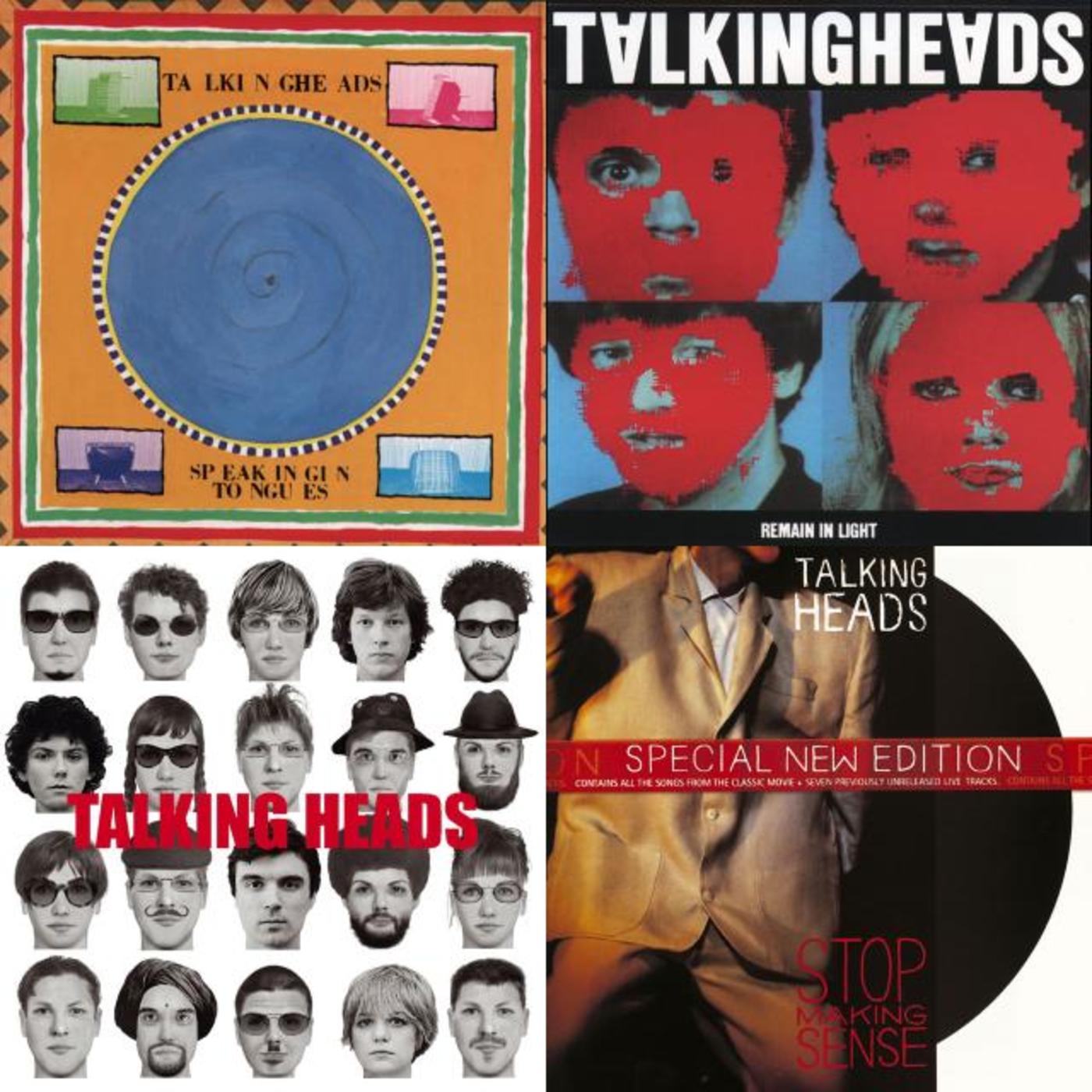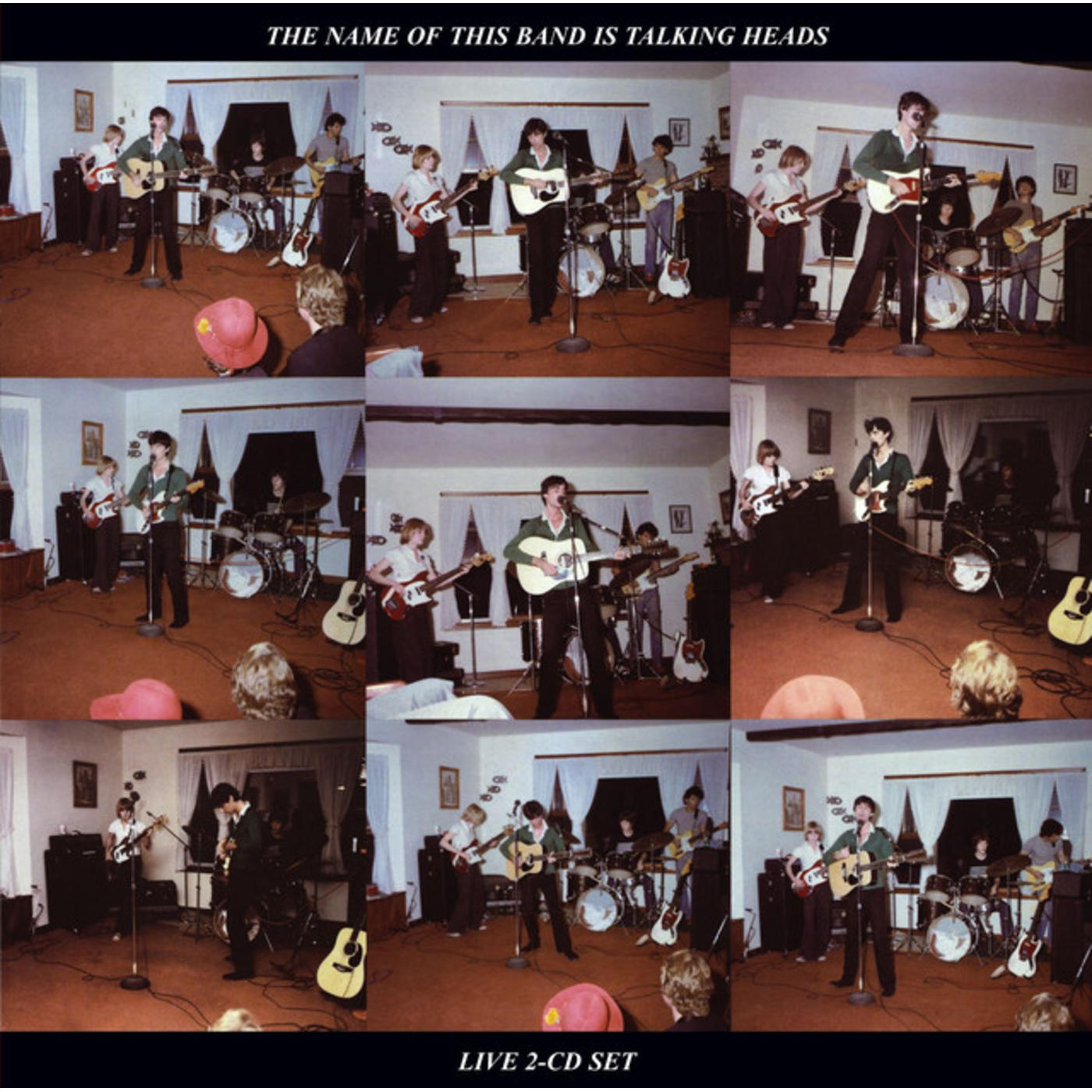October 1980: Talking Heads Release REMAIN IN LIGHT

Over the course of the band's first three studio albums, the Talking Heads crafted a trailblazing course for a fresh and vital new sound that seeped out of New York and London towards the end of the 1970s known as post-punk. With avant-garde art being just as important an influence as pioneering acts like the Velvet Underground, the Talking Heads quickly emerged as one of the movement's leading lights.
Talking Heads had taken quite the artistic leap with the band's third album, the bracing Fear of Music, released in 1979. When it came time to reconvene for album number four, David Byrne, Tina Weymouth, Chris Frantz and Jerry Harrison headed down to the famous Compass Point recording studios in Nassau, where Weymouth and Frantz had purchased an apartment adjacent to the space. The two had already begun experimenting with new rhythms and sounds when they were joined by the rest of the band and eventually producer, Brian Eno.
Eno had already produced Fear of Music and the group's 1978 LP, More Songs About Buildings and Food. Having dealt with the extreme tensions within the group--specifically between Byrne and the rest of the band--the producer was reluctant to go another round with the volatile outfit. Once he heard what they were working on, however, he quickly signed on for the project.
The Talking Heads, for their part, had decided to take an entirely new approach to making the record, one reflective of the communal African way of making music, which is heavy on polyrhythms to power the music forward.
"We were listening to African pop music -- such that was available -- like Fela Kuti and King Sunny Ade, and some field recordings," is how David Byrne explained the process to the Library of Congress in 2017 (via Rolling Stone). "But we didn't set out to imitate those. We deconstructed everything and then as the music evolved, we began to realize we were in effect reinventing the wheel. Our process led us to something with some affinity to Afro-funk, but we got there the long way round, and of course our version sounded slightly off. We didn't get it quite right, but in missing, we ended up with something new."
"We loved pop music, we really did," drummer Chris Frantz put in his 2020 memoir, Remain In Love. "But now we were interested in creating sounds that would take us deeper and far beyond what people had come to expect from us."
Indeed, as Remain in Light arrived in record stores across the country on October 8, 1980. It was still the Talking Heads, but the band's propulsive new style sounded like it had been produced by Sun Ra and the Arkestra. Helping provide the polyrhythmic layers: guitarist Adrian Belew and former LaBelle singer, Nona Hendryx.
"Not only is it brainy and sonically beautiful, but it's also really great to dance to," Weymouth told The World in 2018.
Opening with the one-two punch of "Born Under Punches (The Heat Goes On)" and "Crosseyed and Painless," the 1980 edition of Talking Heads had gone from Velvet Underground devotees towards a post-punk take on Parliament-Funkadelic. This connection would come to life when the band took the album on the road with a host of additional musicians, including the legendary Parliament-Funkadelic keyboard pioneer, Bernie Worrell.
The song that came to define Remain in Light, however, was the opening track of Side 2: "Once in a Lifetime." The songs iconic music video was an instant classic, and a staple on MTV.
"Oddly, maybe, I'm not sure the verse lyrics made that much of a difference," Byrne pondered during an interview in 2017. "Though, yes, the 'You may ask yourself' repetitions and 'How did I get here?' sure struck a nerve with people and became very memorable; they did seem to speak to somewhat universal feelings and concerns."
Hardly a chart monster, "Once in a Lifetime" crept to the middle of the Hot 100, peaking at #91 for the week of May 3, 1981. The #1 song in America that week: Sheena Easton's "Morning Train (Nine to Five)." There was a second single from Remain in Light: "House in Motion," the track that follows "Once in a Lifetime" on the LP. The ominous tune reached #50 on the UK Singles chart, climbing as high as #26 in Ireland.
Here in the States, the album connected with both listeners and critics. On the Billboard 200, Remain in Light peaked inside the top 20 at #19 for the week of December 6, 1980. The #1 album in America that week: Barbra Streisand's Guilty. At the end of the year, it appeared near the chart of most major music critic lists, including NME and the Village Voice's famous Pazz & Jop Poll. In 1989, Rolling Stone named Remain in Light as the fourth best album of the decade.
Remain in Light was recognized in 2017 by the Library of Congress for preservation in the National Recording Registry.


